Soviet Super SAW? The RPD Light Machine Gun
January 31st, 2023
5 minute read
The Ruchnoi Pulemet Degtyarev light machine gun first drew breath in 1943. It was the most advanced light machine gun in the world at the time. The RPD was actually built around a radical new cartridge. The Combloc 7.62x39mm intermediate round changed the way the world made combat weapons.
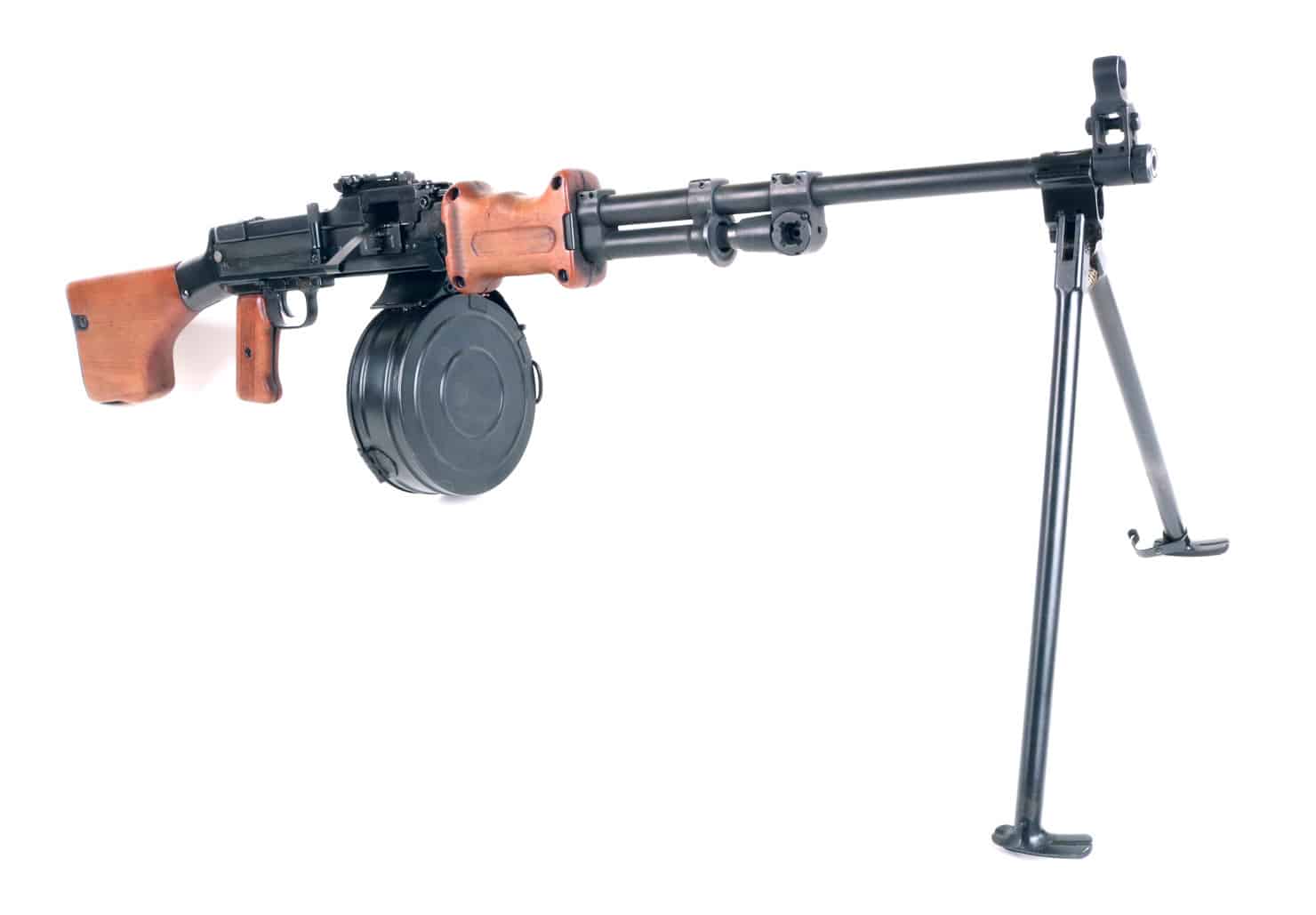
The design committee tasked to develop this new round began with 314 unique cartridge designs that were then winnowed down to eight. The subsequent Soviet M43 7.62x39mm round sported a 122-gr. bimetal Spitzer bullet atop an abbreviated, tapered case. The result was compact, lightweight, powerful, and revolutionary for its era. One of the first operational infantry weapons that fired this new round was the RPD light machine gun. The more-familiar Kalashnikov assault rifle first saw service a few years later.
Before the AK: The RPD Machine Gun
The RPD was a belt-fed 7.62x39mm adaptation of the basic Degtyarev action that drove the WWII-vintage Soviet DP pan-fed machine gun. The RPD fed from a pair of non-disintegrating 50-round belts that linked together to provide 100 rounds of onboard firepower, all packed into a sheet steel drum. Particularly when compared to the BAR, the M-14A1 and eventually the M-60, the RPD was a lighter and markedly more efficient design.
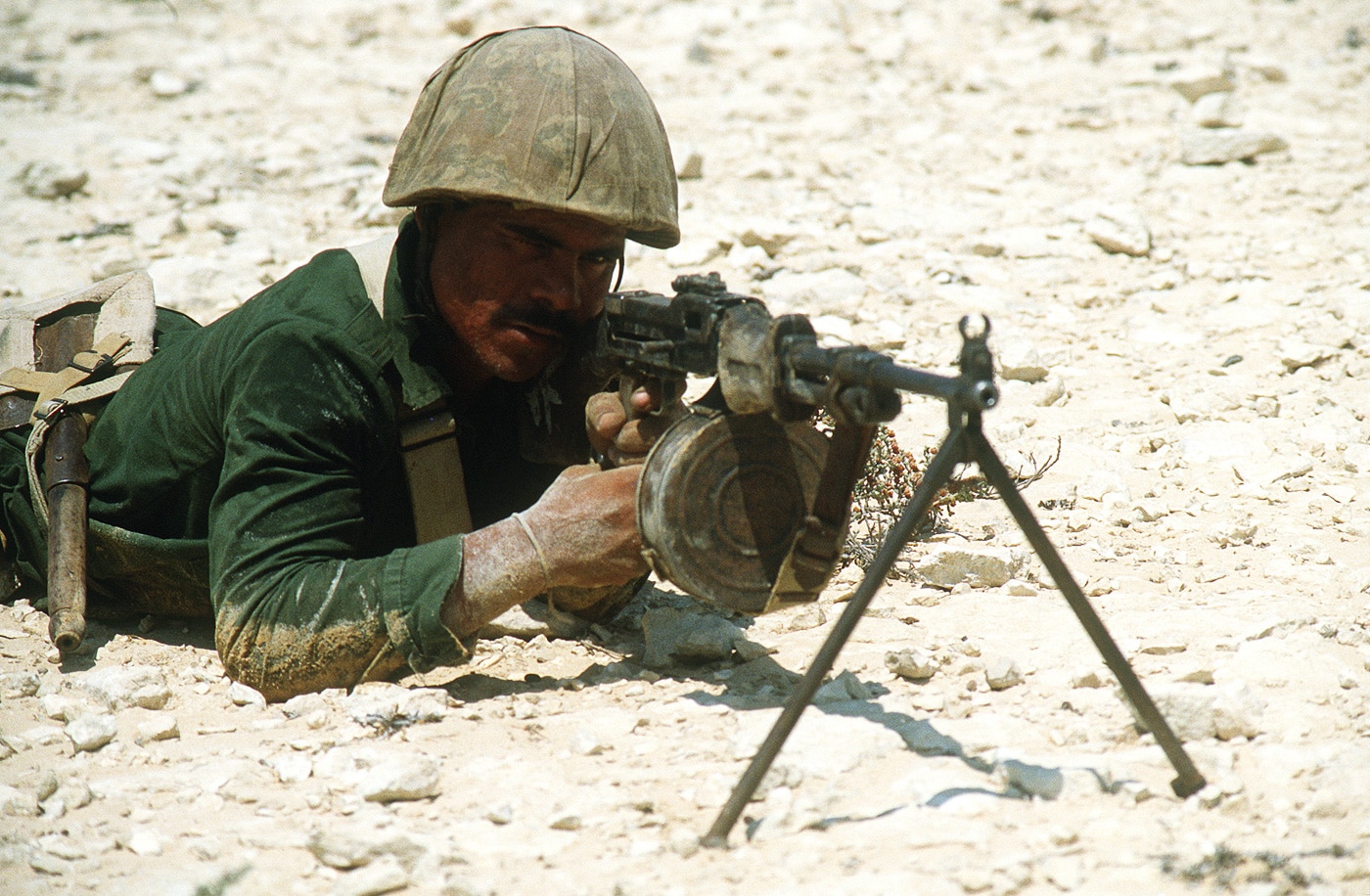
The RPD is an elegant, compact and streamlined weapon. The bolt locks in place via a pair of steel flaps that are cammed outward to engage recesses milled into the interior of the receiver. The gas system incorporates three different positions, but adjustments are tedious and require a special tool.
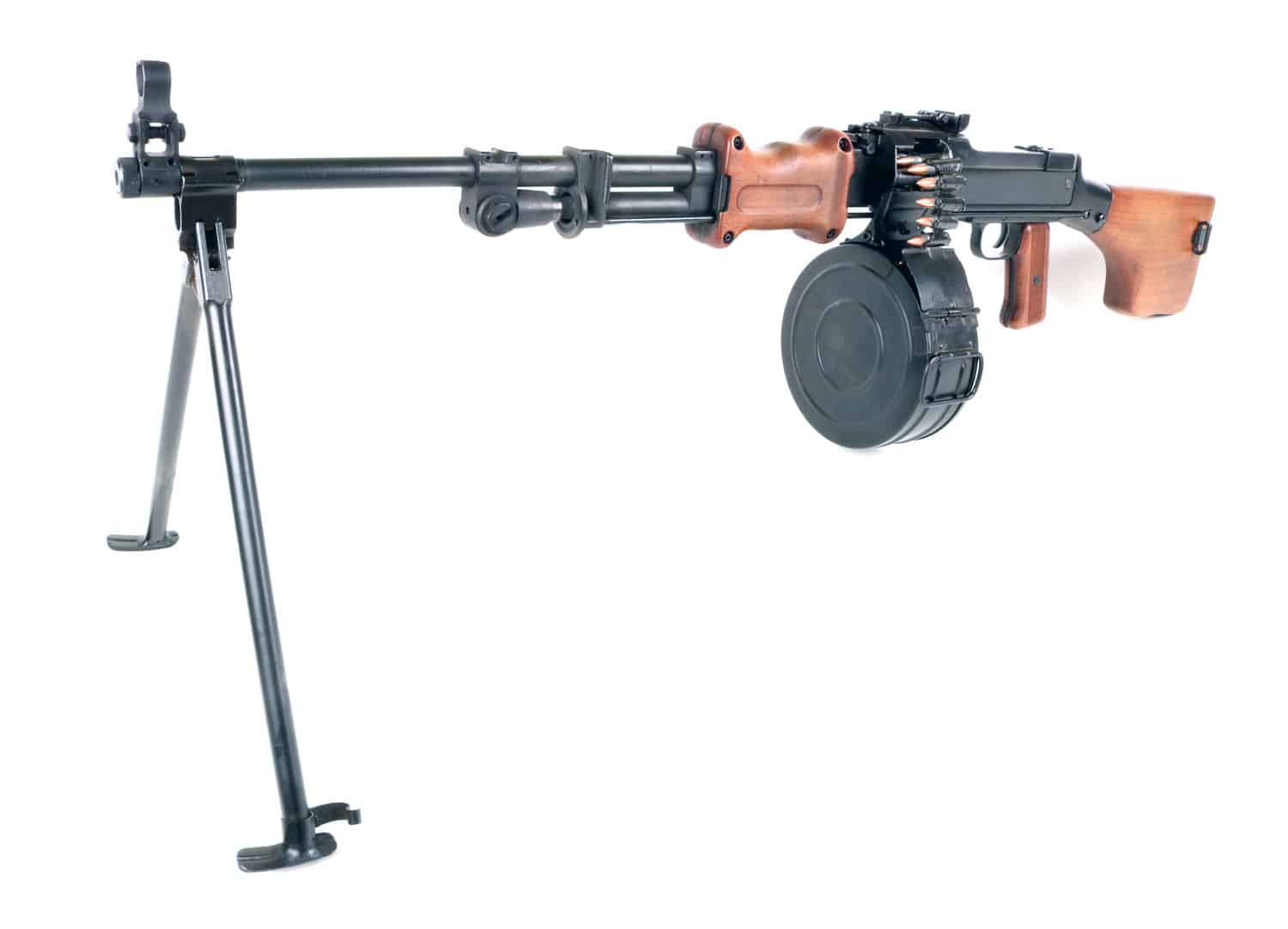
The RPD’s reusable non-disintegrating belts are philosophically similar to those used on the WWII-vintage German MG34 and MG42 machine guns. Each link is affixed to its neighbor via a short spiral of stiff wire. Belts are loaded “brass to the grass” with the links on the top. The RPD drums have no internal moving parts and are simply used to keep the belts clean and untangled.
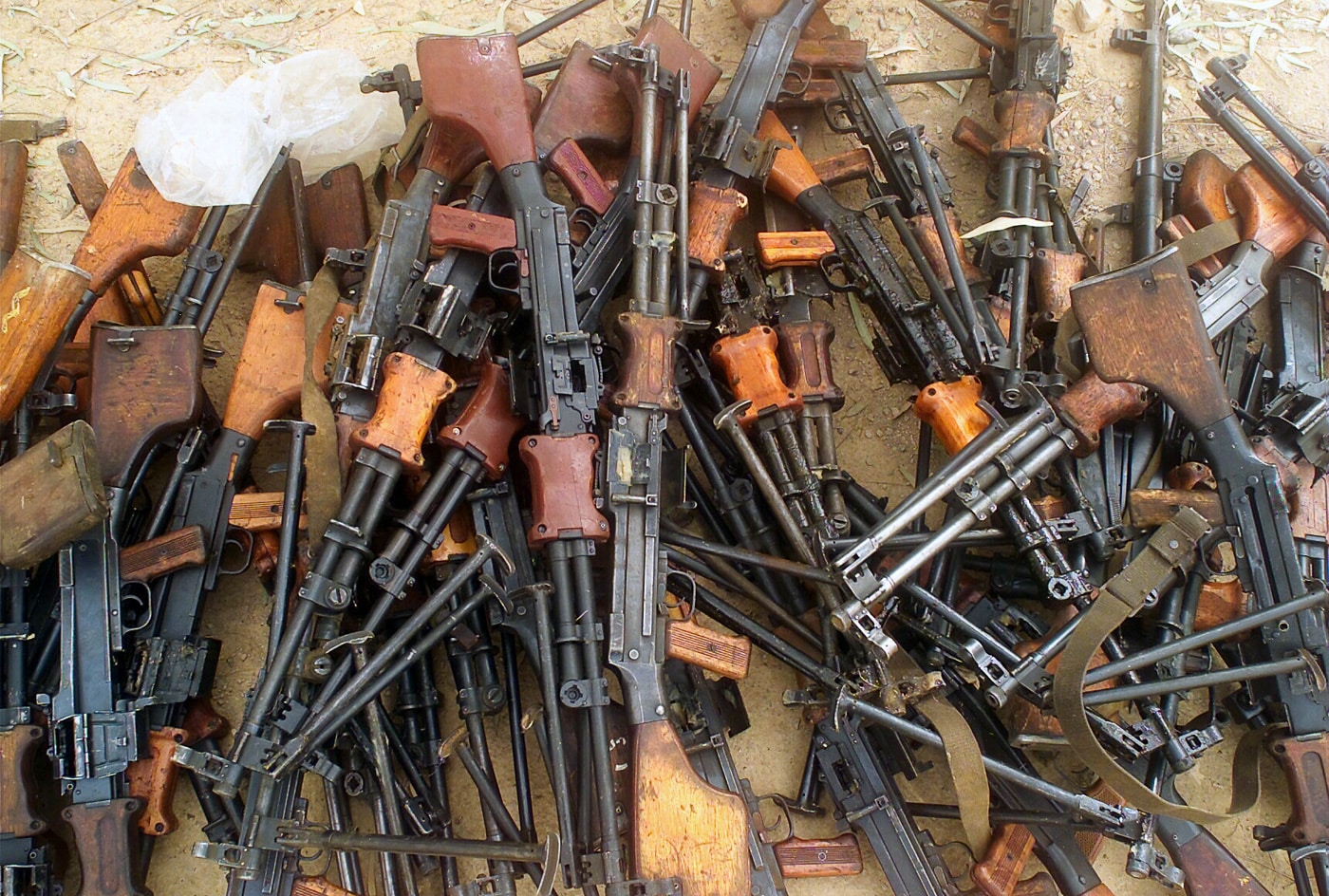
Changing drums involves throwing a latch at the back of the drum, sliding the empty drum off of its dovetail to the rear, remounting a fresh drum, and then securing the latch. The first belt in the drum incorporates a starter tab. The RPD fires from the open bolt and is full-auto-only. Pressure on the trigger releases the bolt assembly, and the gun runs. After fifty rounds the first spent belt falls free while the following belt feeds automatically.
The RPD is a superb design, but it isn’t perfect. The gun heats up quickly, particularly when fired in generous bursts. Its lack of a quick-change barrel limits the weapon’s utility in the sustained fire role. However, the RPD weighs just over half what the M60 General Purpose Machine Gun does. When every important item in your world rides on your back, this makes a huge difference.
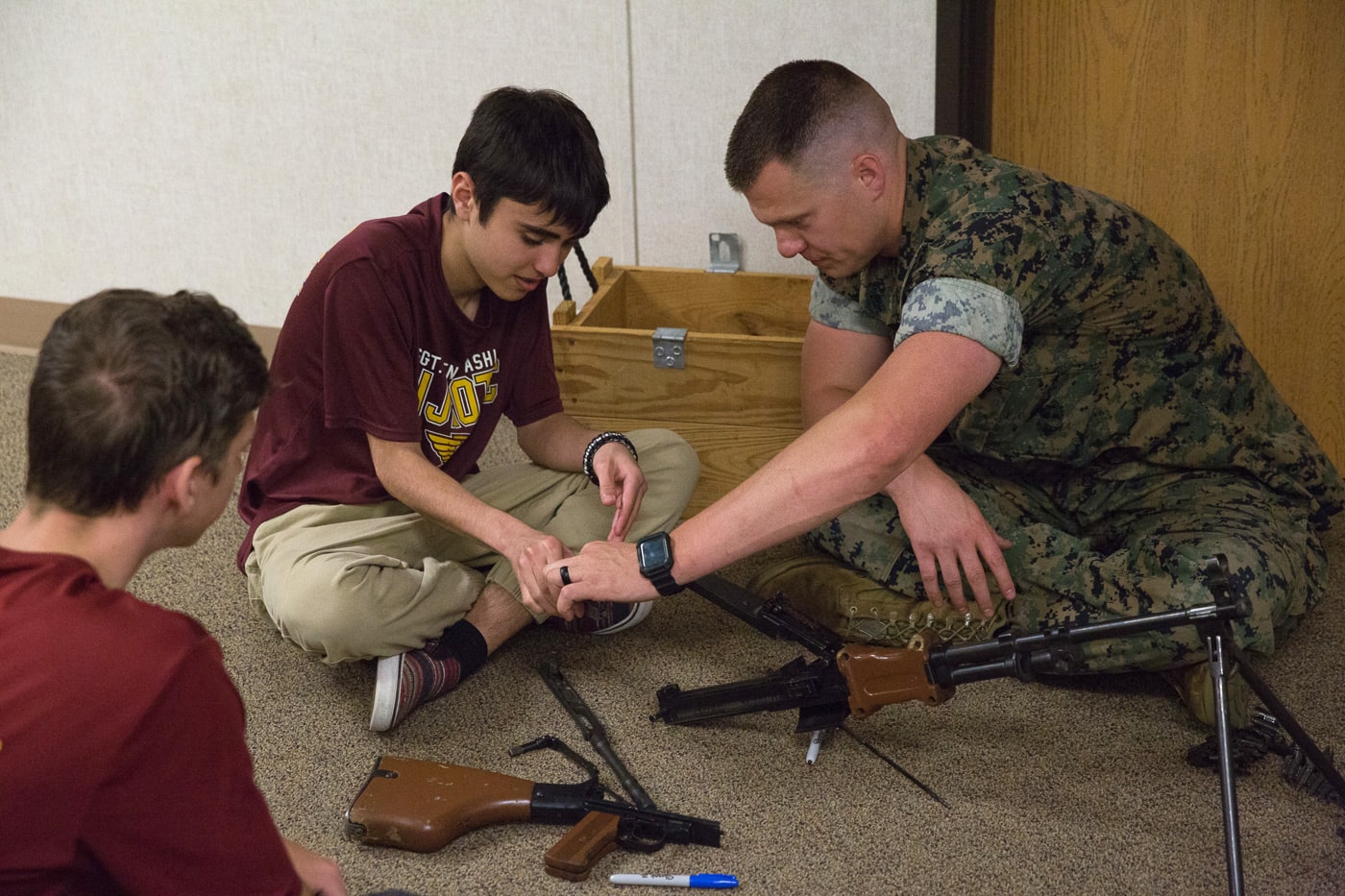
The RPD is designed to be loaded from the left side using the starter tab. Just lock the bolt to the rear, thread the tab through, and give it a sharp tug. The top cover can be opened to access the gun’s entrails, but the release latch is a smooth steel sleeve that is tough to manage if sweaty or gloved. There is also a stop built into the top cover mechanism that limits it at about the 45-degree point. In my experience, the RPD has been supremely reliable.
LMG Trigger Time
The RPD is an exceptional light machine gun. The intermediate cartridge keeps recoil in check and ensures that the weapon is controllable. Reloads are structurally slower than the same chore with a magazine-fed gun like the RPK. However, 100 rounds on tap can be mighty reassuring in a serious scrap.
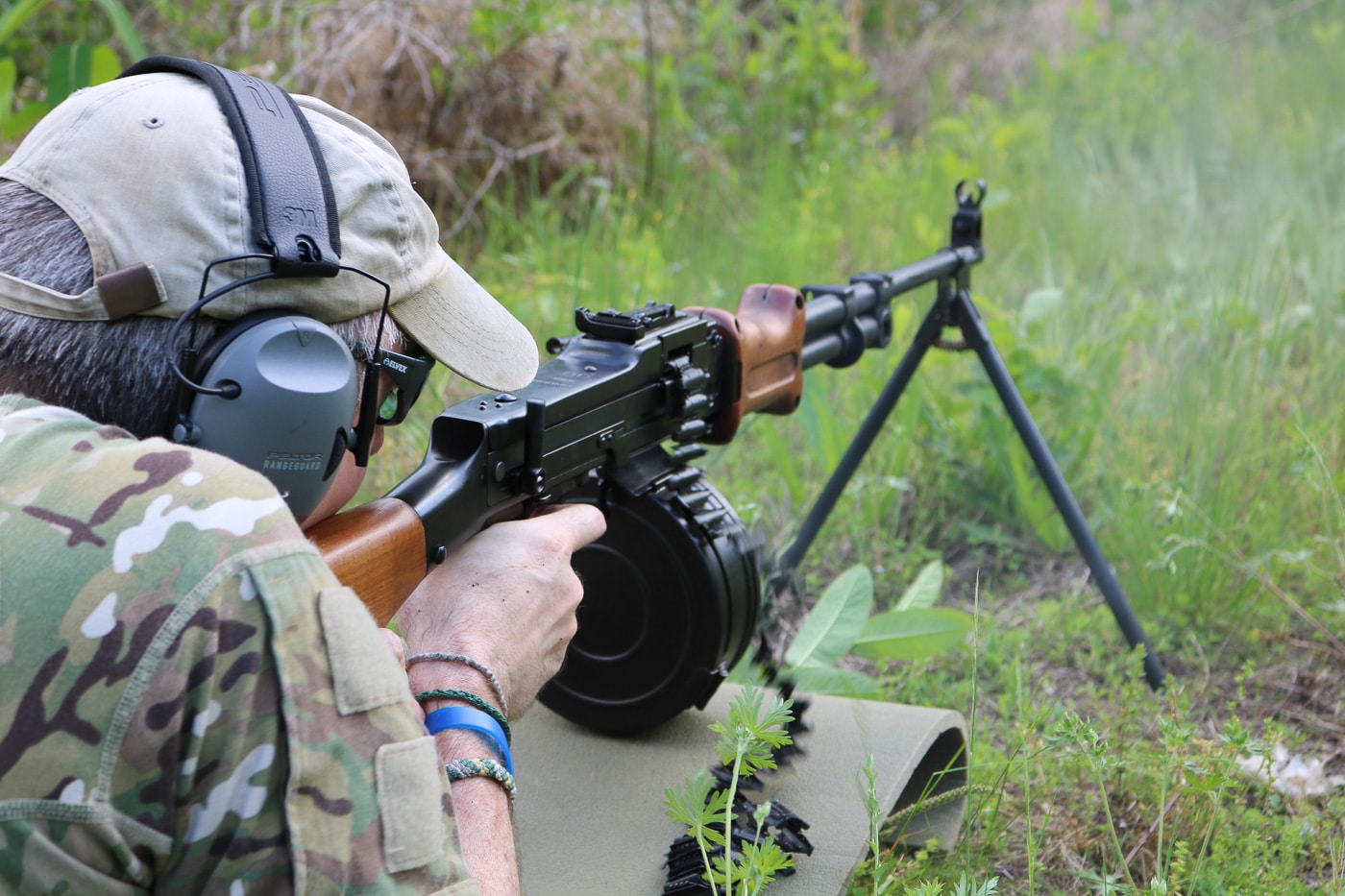
The fixed barrel limits operations to two or three drums’ worth of ammunition fired in rapid succession. Even then, the forearm becomes intolerably hot. The gun runs well from the hip, and the clubfoot buttstock design makes for a comfortable platform when fired from the prone off the bipod. The modest weight of the gun allows it to be fired in short bursts off the shoulder.
Ruminations
When first introduced, the RPD was well ahead of its time. Most comparable weapons are heavier and bulkier even today. The gun has seen action all over the world for three quarters of a century. Its modest weight, reliability and human engineering have kept it popular.
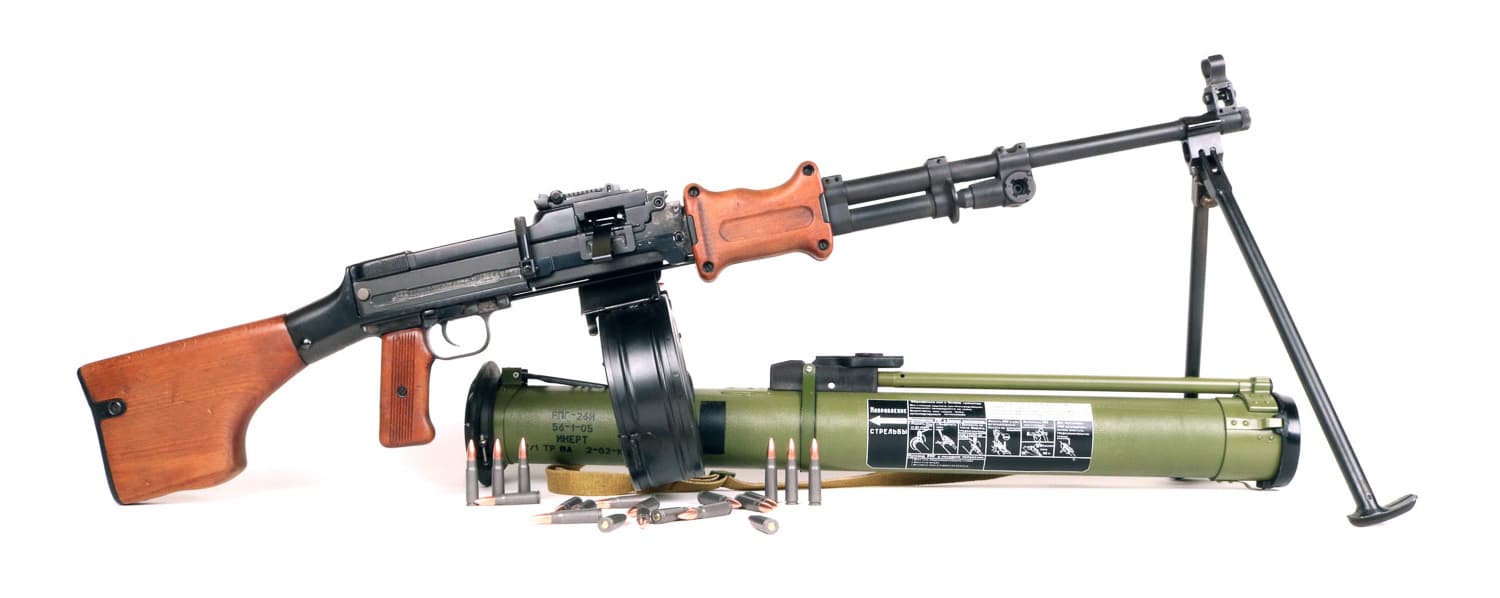
I once met a guy in the VA who got shot in the chest by an NVA soldier armed with an RPD. He obviously survived, but also held the gun in justifiably high regard. An acquaintance carried a chopped version while serving as a security contractor in Iraq after the 2003 invasion. Captured RPD’s were indeed popular with aviators and special operations forces in Vietnam whenever they could be found. The RPD is an exceptionally effective SAW that has stood the test of time.
Editor’s Note: Please be sure to check out The Armory Life Forum, where you can comment about our daily articles, as well as just talk guns and gear. Click the “Go To Forum Thread” link below to jump in and discuss this article and much more!
Join the Discussion
Continue Reading
Did you enjoy this article?

 88
88






